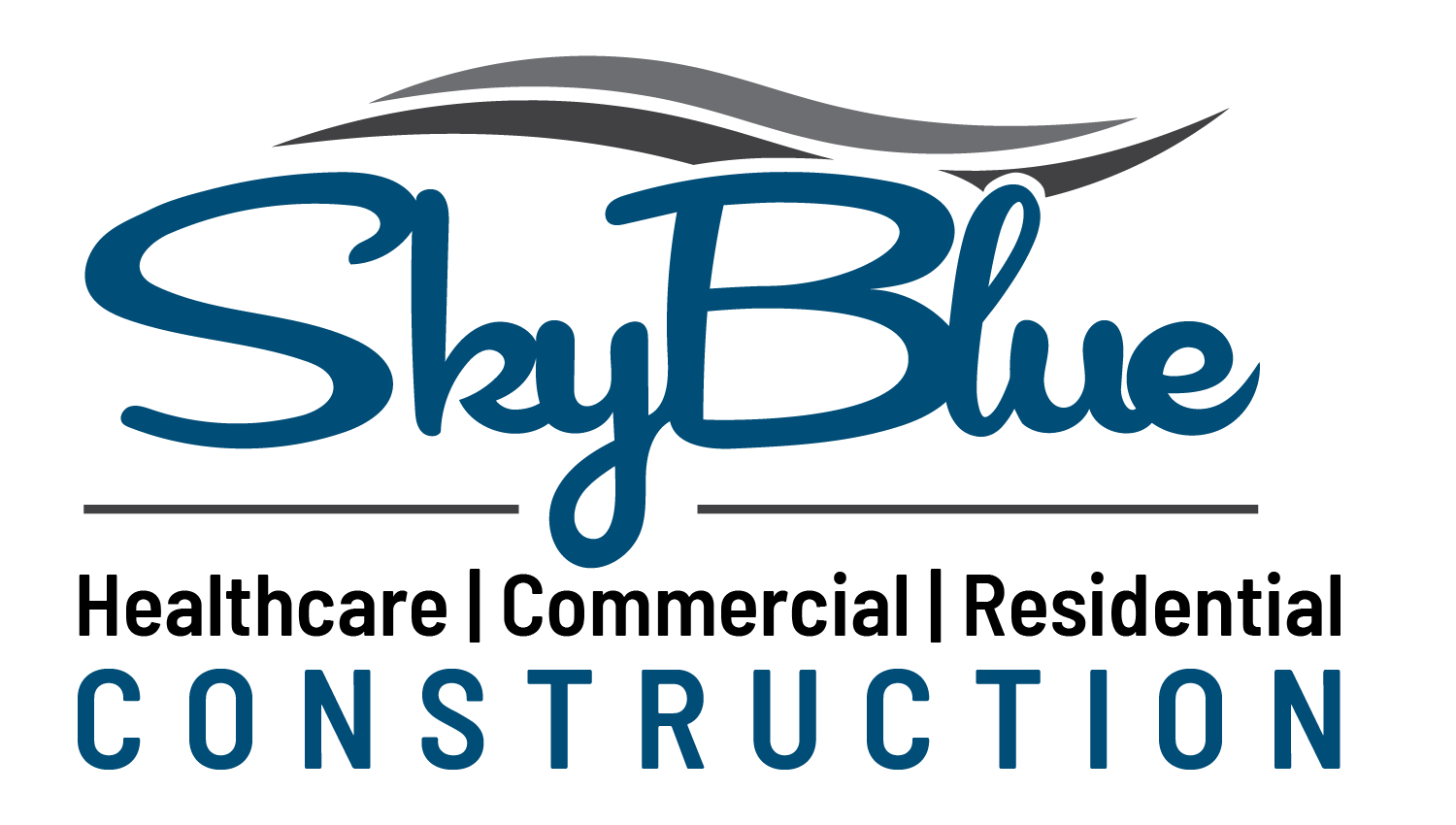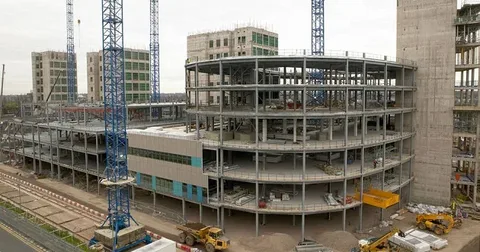Skyblue Construction specializes in hospital construction in Calgary and has broad knowledge in one of the most complicated areas of the construction business. The construction of a hospital is a special branch of institutional and heavy commercial construction that requires a certain level of expertise, accuracy, and attention to detail. The increasing healthcare infrastructure in Calgary needs construction partners that are knowledgeable about the complex needs of medical institutions.
Types of Hospital Construction Projects
New Hospital Construction
New hospital construction needs extensive ground up planning. Such projects include site selection, master planning, and full infrastructure development. The hospital construction in Calgary is usually completed in a period of 3-5 years. Construction crews coordinate the various building systems, such as structural, mechanical, electrical, plumbing and specialized medical systems.
Hospital Renovations and Expansions
Current healthcare institutions usually need improvements to handle the increasing demand or to renovate the obsolete facilities. Renovation work poses special difficulties since construction goes on even as the hospital continues running. Large groups put in place infection control protocols, makeshift barriers, and gradual work strategies to interfere less with patient care.
Critical Systems in Hospital Construction
HVAC and Pressure Control Systems
Advanced HVAC units keep varying pressure areas all over the healthcare facilities. There is a need to have positive-pressure operating rooms to avoid contamination. The isolation rooms must be negatively pressurized in order to manage the airborne pathogens. These critical pressure differentials need to be maintained throughout the year but extreme temperature variations must also be taken into consideration in the construction of the hospital.
Medical Gas and Electrical Systems
Medical gas systems supply oxygen, nitrogen, medical air, and vacuum to patient care units. These systems need special installation, testing, and certification. Electrical systems should offer continuous supply by emergency generators and transfer switches. To avert power failures, critical care areas require an isolated power supply.
Regulatory Requirements for Healthcare Facilities
Building Codes and Standards
Alberta Health Services has stringent standards that are beyond the normal building standards. These codes define the width of the corridors, door specification and emergency egress conditions. Hospital construction in Calgary should be in accordance with the National Building Code, the Alberta Building Code, and certain healthcare facility requirements. Fire safety systems must be equipped with improved measures of protection, which include sprinkler systems, fire-rated assemblies, and smoke evacuations.
Infection Control Standards
The construction teams maintain excellent infection control measures in all phases of projects. Materials selection prioritizes non-porous, antimicrobial surfaces that withstand frequent disinfection. Air filtration systems must meet HEPA standards in critical areas. Water systems require anti-legionella measures and regular testing protocols.
Specialized Areas Within Hospitals
Operating Rooms and Surgical Suites
The OR requires very strict environmental conditions such as temperature, humidity, and air exchanges. Laminar flow systems are used in order to give ultra-clean air above the surgical fields. Construction of a hospital in surgical suites involves special lighting systems, medical gas booms and surgical equipment integration panels. Floors should be able to sustain heavy machines and give them a non-porous smooth surface.
Diagnostic Imaging Departments
Imaging departments house MRI machines, CT scanners, and X-ray equipment requiring specialized construction. MRI rooms need radiofrequency shielding and magnetic field containment. CT and X-ray rooms require lead-lined walls for radiation protection. Structural reinforcement supports equipment weighing several tons.
Emergency Departments
The emergency departments enable quick treatment and patient triage. The design factors involve ambulance bay access, decontamination facilities, and the trauma rooms. The sightlines allow staff to be monitored, and the patient’s privacy is not compromised. Negative-pressure rooms provide isolation of potentially infected patients.
Technology Integration in Modern Hospitals
Digital Infrastructure
Modern hospitals require extensive IT infrastructure supporting electronic health records and diagnostic systems. Hospital construction in Calgary incorporates a comprehensive network of cabling, wireless access points, and server rooms. The redundant systems guarantee the uninterrupted functioning of the vital digital services. Cybersecurity considerations influence network design and access control systems.
Smart Building Systems
Automation systems are built to monitor and control mechanical, electrical and security systems. Real-time monitoring detects possible problems during their infancy before they impact patient care. The energy management systems are efficient in the minimization of consumption at the expense of ensuring the necessary environmental conditions. Integration platforms coordinate multiple building systems through central command centers.
Project Delivery Methods
Design-Build Approach
Design-build delivery simplifies the implementation of a project as it is a single-point responsibility. This methodology decreases the schedule and enhances the collaboration of the design and construction teams. Early involvement of contractors in the construction of the hospital is beneficial in terms of constructability and cost-effectiveness.
Construction Management
Construction management offers professional management advice during project stages. The approach provides flexibility in the change of design but at the same time, it controls budget and schedule. Open communication ensures that the stakeholders are updated on the project developments.
Quality Assurance in Healthcare Construction
Quality control measures exceed standard commercial practices. Independent testing verifies air quality, water purity, and medical gas systems. Commissioning processes validate that all systems operate correctly before occupancy. Documentation requirements include detailed as-built drawings and operational manuals. Skyblue Construction maintains rigorous quality standards, ensuring hospital construction in Calgary projects meets all regulatory requirements while delivering facilities that serve communities for generations.


